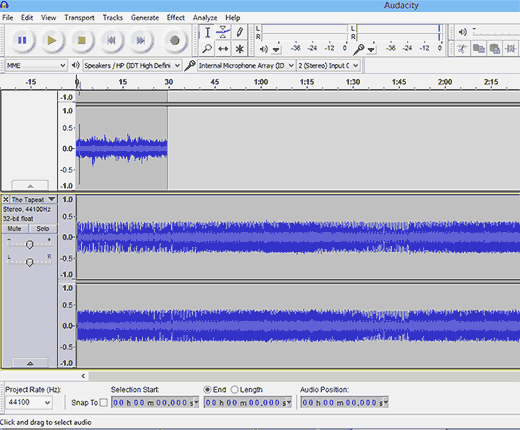
The answer will come down to two things: how fixable the audio file in question is, and how much time you have (or, more realistically, how much time you’re willing to invest into fixing it). Is the audio salvageable, or should you scrap this episode? If you fill the roles of both editor and producer of your podcast, as many DIY podcasters do, this is the point at which you need to make an executive decision.

Dealing With Bad Podcast Audio: What to do? Instead, let’s focus on the bad audio we have on our hands and, more importantly, what to do about it. There are plenty of resources you can read up on before your next recording session. 24, 2020), you’re probably not all that interested in hearing how to prevent bad audio from being created in the first place. If you found this article by frantically Googling how to fix bad audio, and fast (like me on Nov. That includes having some degree of control over audio quality, even if the recording of said audio is not happening in our own physical space. But as podcast editors and producers, our job is to make a listenable show. In fact, it’s probably more common than good audio. It was at this point I realized that I had some tough decisions to make, and a LOT of work ahead of me.

Roughly six hours until the episode was due to release. Sure, his audio had been somewhat bad during the recording session, but not this bad.Īnd the worst part was that, somehow, it seemed as if the whole file had been sped up ever-so-slightly, meaning that none of our conversation was syncing up the way it had actually occurred. He sounded like a malfunctioning robot who was also fully submerged underwater. I could also see a ton of static and noise throughout his waveforms.īut then I pressed play on his audio and my stomach dropped. Since we always sync our start and stop times, that was concerning. My first clue that something was off was that our guest’s audio file was not the same length as the other podcast participants. Immediately upon importing our guest’s audio file, I could tell we had big trouble on our hands.

Then I downloaded the mp3 sent to us by our guest speaker, planning to add his voice into the mix, just as I had dozens of times before. As always, I opened up my own Audacity file and imported my two co-hosts’ audio files. It was Tuesday, November 24, 2020, and I was piecing together audio from the previous weekend’s podcast recording session.


 0 kommentar(er)
0 kommentar(er)
